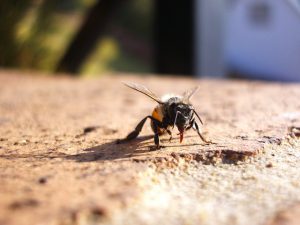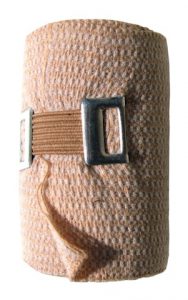10 first aid myths debunked
There are certain practices that have been handed down through the generations that may be more harm than help.
In emergencies, some of us tend to embrace practices that have been handed down through the various generations. However, do they really help or harm people? Ageless Online finds out the answers from Stephen de Souza, a senior training instructor at the Singapore Red Cross Academy:
MYTH 1: Burns
Treat a burn or a scald with butter, mayonnaise or ice.
Expert advice – This is unhygienic as the chemicals in the food substances may increase pain and cause infection. Ice may cause a sudden drop of temperature and cause tissue damage.
Solution – Cool the affected area gradually by running tap water over it.
MYTH 2: Bee sting
If you are stung by a bee, you must squeeze out the sting.
Expert advice – By squeezing the flesh, you are applying pressure to the sting. This may cause the toxins to flow into the bloodstream.
Solution – With a pair of tweezers, pull out the sting swiftly to the part of the stinger that’s exposed above the skin.
MYTH 3: Bruise
Rub a hard boiled egg over a bruise to ease blood circulation.
Expert advice – This has no recorded medical benefit.
Solution – Apply an ice pack over the bruise to reduce internal bleeding.
MYTH 4: Fainting
Place an onion or garlic under the nose to revive a person who has fainted.
Expert advice – There is no recorded medical benefit.
Solution – One usually faints because of insufficient blood flow to the brain. Lay the victim face up and raise his legs to increase blood flow to the brain. Loosen any tight clothing so the person can breathe properly.
MYTH 5: Black eye
Slap a raw steak on a black eye.
Expert advice – The only thing it may achieve is to cause the face to become bloody due to stains from the raw meat.
Solution – Apply an ice pack on the eye to reduce swelling. Seek medical attention to check for any head injuries.
MYTH 6: Seizure
Insert a metal spoon into the mouth of someone having a seizure to prevent him from biting his tongue.
Expert advice – There is no need to insert anything into the mouth. During a fit, the victim’s teeth are usually clenched. It is very rare for someone to bite his own tongue during a seizure. The metal spoon may injure the palate, the teeth and the gums.
Solution – Lay the person flat on the ground then turn his body sideways. This will prevent his tongue from blocking his airway.
MYTH 7: Bleach
If a grandchild accidentally drinks bleach, insert a finger into his mouth to induce vomiting.
Expert advice – This is not encouraged. The bleach is corrosive and may ‘burn’ the airway a second time during vomiting.
Solution – It depends on how much of the bleach the child drank. If it’s a small amount, drinking fluids may help. Observe the child and see a doctor immediately.
MYTH 8: Nosebleed
Tilt your head up to stop bleeding.
Expert advice – Do not tilt the victim’s head back as blood will trickle down the back of his throat causing vomiting and possibly, choking.
Solution – Get the victim to sit. Lean slightly forward and press the fleshy part of his nose firmly for 10 minutes. Advise the victim to breathe through his nose. This should stop the bleeding. Rinse the mouth and gently clean the nose. If bleeding persists, press for another 10 minutes. If bleeding still persists after 10 minutes, seek medical attention.
MYTH 9: Cuts/Scrapes
Spread coffee powder on wound.
Expert advice – This has no recorded medical benefit.
Solution – For minor cuts, always control bleeding with direct pressure using gauze or a clean cloth. For major cuts, use a triangular pressure pad. Clean the wound with water or mild antiseptic solution. For minor cuts, cover the wound with a plaster to minimise infection. For major cuts, apply a pressure pad and bandage the pad with a roller bandage. If bleeding persists, seek medical attention quickly.
MYTH 10: Sprains
Put a warm towel over the sprain.
Expert advice – This has no recorded medical benefit.
Solution – For a fresh sprain injury, it is advisable to apply a cold compress to reduce swelling under the tissues. Apply the universal principle of RICE for sprains. RICE stands for Rest – stop whatever you are doing, Ice application – apply cold compress over the swelling over 15 minutes, Compress the swelling using a roller bandage and Elevation – for example if you have a sprained ankle, elevate the affected ankle to reduce swelling.
(** PHOTOS: Bee 2, loti, stock.xchng; bandage, rolve, stock.xchng)
(** Special thanks to the Singapore Red Cross for their help in putting the article together.)



0 Comments